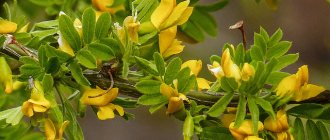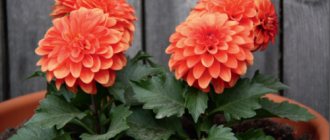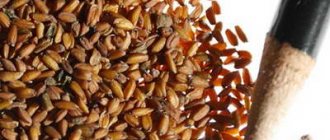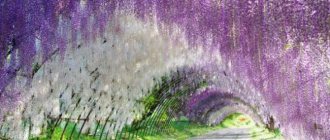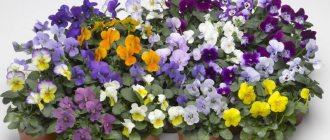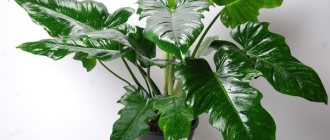Craspedia became widespread around the world just recently - about 30 years ago. This culture comes from Australia. Craspedia is not only a bright decoration of a garden plot, but also a discovery for florists. This plant is used in live and dry bouquets. Another area of application for craspedia is florarium.
The flower belongs to the Asteraceae family. The plant has about 30 species, which grow both in lowlands and at higher elevations. The root system of the plant consists of one straight tap root, as well as several thread-like roots. The stem of Craspedia is straight with a round cross-section. The dense and erect stem is not afraid of gusts of wind. The stem and foliage are light green in color. As the season ends, the color becomes darker. The height of the stems is about 90 cm. Very small tubular flowers are collected in spherical inflorescences. The main color of the inflorescence is yellow. Orange inflorescences are less common. The photo below shows a craspedia flower.
Craspedia leaves are wide and gray with a silver tint. Flowering begins in August and ends in September. If craspedia is grown in a greenhouse or on a balcony, then the crop will delight the eye throughout October.
Villi on the stem contribute to the accumulation of moisture in the form of dewdrops settling on it. This ability comes from the arid growing conditions of the flower.
Of the 30 existing species of culture, the most widespread is the globular craspedia (Craspedia Globoza) . This flower is native to dry Australian regions. Despite the fact that the plant is a perennial, in Russia it is grown as an annual. It grows up to 70 cm. This crop has no aroma.
Types and varieties
The most widespread is the already mentioned spherical variety of craspedia. Among the varieties we can highlight:
Drumsticks are a domestic variety that is resistant to cold and also not demanding on the soil. Loves sun and moisture. Seeds are sown from February to April. In May it is time to plant seedlings in open ground. For cutting, the crop is usually grown in greenhouses. Caring for a flower is simple. Abundant watering during dry periods and fertilizing with fertilizers are sufficient. Craspedia Drumsticks is grown in the same way as other plant varieties. The peculiarities of its cultivation are abundant and regular watering and periodic application of fertilizing.
Drumsticks are ideal for floristry. This variety is often used to create colorful winter bouquets. Used in decorative arts.
Drumsticks
Billy Button is a perennial. However, it is grown as an annual. The erect stem is about 60 cm high and emerges from a rosette of leaves that have a silvery tint. The stems have fibers that are capable of collecting dewdrops. The inflorescences have the shape of balls of bright yellow color. Flowering - from August to September. This variety is a lover of moisture and sun. Resistant to cold. Watering the plant is required in dry weather, as well as at the beginning of its growth. Fertilizers are also required periodically.
Billy Baton
Another variety mentioned on the Internet is Golden Ball, although it could not be found in the catalogs. They write that the height of this mysterious variety can reach 75 cm, the inflorescences visually resemble yellow balls, the stems are tall, erect, and the variety itself is unpretentious and resistant to cold. Also unclear is the variety mentioned on some resources - Trommelslok, which is obviously an erroneous spelling of the word Trommelstock (German: “drumsticks”).
Another type of crop is the single-flowered craspedia. This variety is native to New Zealand. This is not such a tall plant. The height does not exceed 35 cm. The fibers on the stems are much longer. The color of the hemispherical inflorescence can be sand, yellow and even orange.
Single-flowered
Why do fingers appear - drumsticks?
Characteristics of the symptom
Fingers - drumsticks (Hippocratic fingers) are a characteristic deformation of the distal parts of the fingers.
The nail phalanges expand flask-shaped, the nails take on the appearance of watch glasses, and due to changes in the subungual tissues, they become mobile when pressed. The angle between the posterior nail fold and the nail plate is more than 180 degrees. The symptom is the most obvious sign of hypertrophic pulmonary osteoarthropathy (Marie-Bamberger disease) - a secondary lesion of the osteoarticular system under the influence of changes in lung tissue, toxic tumor, and inflammatory factors. Along with finger deformation, bone pain is noted. Typically symmetrical involvement of the knee, ankle, elbow, wrist, interphalangeal joints with pain, redness, swelling, stiffness, and decreased range of motion.
Respiratory tumors
The most common cause of finger deformities in the form of drumsticks is bronchogenic lung cancer (every third case). In the early stages it manifests itself as a dry hacking cough. Subsequently, chest pain, hemoptysis, and pulmonary hemorrhages occur due to the germination of surrounding tissues and tumor disintegration. The symptom is also provoked by the following neoplasms of the respiratory system:
- Small cell lung cancer.
It is characterized by a high degree of malignancy and an unfavorable course. A prolonged cough with blood in the sputum, shortness of breath, pain, appetite disturbances, weight loss, and weakness are observed. - Metastases in the lungs.
Occurs with cancer of the breast, liver, prostate, stomach, bladder, kidneys, intestines, and other organs. They manifest as colds, which are accompanied by a wet cough, hemoptysis, and pain. - Pleural mesothelioma.
Initially, nonspecific general signs are revealed: weight loss, weakness, sweating, fever. Then tumor pleurisy develops with corresponding symptoms.
Neoplasms of other localizations
A characteristic feature of malignant neoplasia is the early appearance and rapid progression of symptoms. Often, fingers take on the shape of drumsticks, and nails become deformed in the form of watch glasses even before other manifestations of the tumor occur. The reasons for the changes are:
- lymphogranulomatosis;
- thyroid cancer;
- esophageal carcinoma;
- mediastinal sarcoma;
- metastases to the mediastinum.
Benign tumors that affect the shape of the fingers include atrial myxoma. The symptom is sometimes detected with extraorgan neoplasms of the retroperitoneal space, especially those located high up, which impair the mobility of the diaphragm.
Fingers shaped like drumsticks
Inflammation of the lungs and pleura
In patients with inflammatory diseases, fingers begin to resemble drumsticks several months, years or even decades after the first signs of the disease appear. The time period from the onset of symptoms to the formation of deformity depends on the severity of the inflammatory and destructive changes. In patients with purulent lesions, symptoms increase faster. Nails - watch glasses with expansion of the distal phalanges are found in the following pathologies:
- Lung abscess.
It is a complication of bacterial inflammation with destruction of lung tissue. Pain, fever, and dry cough increase over several days or weeks. Then the abscess opens into the bronchus, which is accompanied by the discharge of a large amount of purulent sputum and an improvement in the general condition. - Empyema of the pleura.
Purulent pleurisy, as a rule, develops when inflammation spreads from neighboring organs. The accumulation of pus in the pleural cavity occurs against the background of hectic fever, chills, heavy sweats, increasing shortness of breath, intense stabbing pain in the chest. - Bronchiectasis.
Irreversible dilatation of the bronchi occurs with a constant cough. In the morning, when placed on the sore side, purulent sputum comes out in a mouthful. The pathology is chronic with periods of exacerbations. Exhaustion and intoxication of the body are noted. - Chronic pneumonia.
Fingers resemble drumsticks, mainly in severe forms. Weakness, sweating, shortness of breath, wet cough, and hyperthermia are detected. Characterized by a wave-like course with complete or incomplete remissions. - Chronical bronchitis.
As in the previous case, the symptom appears in severe cases with the formation of respiratory failure. Cough with mucopurulent sputum, shortness of breath, and wheezing are observed. - Bronchial fistula.
Occurs during severe infections, after injuries, operations. It can open onto the skin, into the pleural cavity, and into neighboring organs. It occurs with respiratory failure and chronic intoxication.
Along with nonspecific infectious and inflammatory processes, fingers and drumsticks are provoked by tuberculosis, especially with a long course of the pathology, destructive forms, and the occurrence of complications.
Pneumoconiosis
Symptoms of “watch glasses” and “drumsticks” are detected in people suffering from occupational lung diseases due to prolonged inhalation of industrial dust. The first manifestations of the disease develop several years (sometimes decades) after the start of contact with dust, including shortness of breath, cough with a small amount of sputum, stabbing pain in the chest. Deformations of the fingers are formed as the process progresses with the appearance of weakness, sweating, and shortness of breath at rest. The reasons are:
- silicosis;
- silicates (asbestosis, talcosis);
- metalloconiosis (aluminosis, berylliosis, siderosis);
- carboconiosis (anthracosis, graphitosis, soot pneumoconiosis);
- mixed pneumoconiosis (anthracosilicosis, siderosilicosis).
Hereditary and congenital pathologies
“Drum sticks” and “watch glasses” are found in patients with cystic fibrosis. Symptoms are detected in cystic fibrosis of the lungs and the mixed form of the disease. In the first case, frequent bronchitis, pneumonia with pulmonary obstruction, and the development of respiratory failure are observed. In the second, manifestations from the lungs are combined with disturbances in the gastrointestinal tract.
With Kartagener syndrome, due to the immobility of the cilia of the bronchial epithelium, children develop recurrent pneumonia, chronic bronchitis is diagnosed by the age of 2-3 years, and bronchiectasis forms at 3-4 years, which are foci of infection and cause the development of complications. In patients suffering from widespread pulmonary hypoplasia, the symptom is caused by increasing respiratory failure, accompanied by chronic pneumonia.
Other diseases of the respiratory system
Among other pathologies of the respiratory system that cause the formation of “drumsticks” and “watch glasses,” the most common is COPD. Symptoms occur in the later stages of the disease and are supplemented by severe obstruction or emphysema, and symptoms of respiratory failure.
Other possible causes are fibrosing alveolitis and allergic alveolitis. Characteristic changes in the fingers are found in people with chronic mountain sickness. Finally, “drumsticks” and nails resembling watch glasses are detected in patients with diffuse pneumosclerosis, regardless of the etiology of the development of this pathological condition.
Heart diseases
Deformation of the fingers develops with the following congenital heart defects, accompanied by severe cyanosis due to massive discharge of venous blood into the systemic circulation:
- Fallot's disease (triad, tetrad, pentad);
- tricuspid valve atresia;
- abnormal drainage of the pulmonary veins;
- transposition of the great vessels;
- common arterial trunk.
In addition, the symptom is found in children with certain white heart defects, such as the Eisenmenger complex or isolated large ventricular septal defects. The time of appearance of deformation in white and blue defects is determined by the form of the pathology.
An acquired disease that provokes the rapid formation of “drumsticks” is infective endocarditis. Infectious damage to the heart is manifested by hectic fever, chills, profuse sweating, anemia, and increased fragility of blood vessels. The outcome is possible heart defects.
Digestive system diseases
Fingers - drumsticks are potentiated by severe chronic diseases of the intestines and liver. Changes in the terminal phalanges, “watch glasses,” are formed gradually. Observed in pathologies such as:
- chronic hepatitis;
- liver cirrhosis (alcoholic, primary biliary, due to metabolic disorders);
- Crohn's disease;
- nonspecific ulcerative colitis;
- gluten enteropathy (celiac disease).
Other reasons
Other pathologies accompanied by the formation of “watch glasses” and “drumsticks” include the following diseases:
- Endocrine
: hyperthyroidism, diffuse toxic goiter. - Diffuse connective tissue diseases
: systemic scleroderma, SLE. - Dermatological
: pseudosynigomyelic acropathy. - Hematological
: polycythemia, histiocytosis X, hereditary familial erythrocytosis. - Infections and parasitoses
: HIV, trichocephalosis.
With pachydermoperiostosis, “clubs” are combined with increased sweating, pachyderma, and early formation of facial wrinkles. Unlike secondary osteoarthropathy, finger deformities in this disease are not caused by dysfunction of internal organs, but by mutations of certain genes.
Examination of the hands
Growing from seeds
In order to grow a crop from seeds through seedlings, you need to perform a number of simple steps:
- Prepare boxes for seedlings in advance;
- Fill the boxes with nutritious substrate, it must be moist;
- Sow the seeds and place the boxes on the windowsill. The more sun the better. It is not worth sprinkling seeds on top, since there is little chance that they will break through;
- Cover the top of the box with film.
It is best to plant seedlings in February . In May it is time to plant seedlings in open ground.
General information
Flowering period
The flowering period begins in mid-August and lasts on average until the end of September. Even dry inflorescences retain their color and do not fall off from light mechanical stress or minor gusts of wind.
Growing from seeds
Craspedia reproduces in two ways: seeds and vegetatively. Taking into account the cold climate of our country, gardeners do not recommend planting seeds directly in open ground. Sowing of seedlings must be done in late winter - early spring. The most favorable is peat soil.
To obtain seedlings, you must follow a number of rules:
- – place seeds on the surface of damp soil, do not deepen them or cover them with soil;
- – cover with film and leave in a bright place;
- – air temperature 21-23 degrees;
- – it is necessary to carry out fifteen-minute ventilation, for this you need to remove the film daily;
- -after 15-20 days the first shoots should appear;
- – newly emerged plants do not need to be kept under film;
- – observe the watering regime;
- – for effective growth it is permissible to use artificial lighting in the form of a fluorescent lamp;
- – when the sprouts reach 5-6 cm, they need to be planted in different containers;
- – at the end of spring, when the air temperature is not lower than 20 °C, plant in the garden, keeping a distance between shoots of at least 25 cm.
Planting by division
Thanks to the warm climate of the southern regions of our country, it is possible to grow craspedia as a perennial plant. It is appropriate to use the vegetative propagation method - dividing the bush. In the fall, you need to dig up the plant, divide it into parts, the sections must be treated with charcoal, and dried at room temperature for three to four hours. After this, the plant can be planted.
Please note: dividing the bush is only permissible for two to three year old plants. In winter, you will need shelter made from natural materials (needles, foliage, branches, etc.).
Planting and care
In May, seedlings are planted in open ground. Select sunny places for planting. of about 30 cm should be left between seedlings . Flowering begins only in August, sometimes in September.
Despite the fact that craspedia comes from arid areas, it loves moisture. Therefore, watering should be regular and plentiful.
If you plant a flower in a greenhouse, the flowering period will be extended, and the plant will delight with its colors throughout October. Another advantage of planting a flower in a greenhouse is that the number of dried flowers collected will be much greater.
It is necessary to feed the crop with mineral fertilizers. Nitrogen fertilizing is carried out immediately after planting the seedlings. Then they take complex mineral fertilizers.
It is possible to replant craspedia, but it is important to pay close attention to the plant at this moment. It is advisable to transplant after the end of flowering, that is, in the fall. After transplantation, the flower must be looked after. Firstly, a flower in a new place requires abundant and regular watering, as well as fertilizing. Complex mineral fertilizers, as well as organic fertilizers, are suitable as fertilizers.
Craspedia care
Craspedia globosa
Caring for craspedia is simple; it consists of weeding, mineral fertilizing (3 times per season), and watering. Despite the drought resistance of adult plants, they develop and bloom better with constant moderate humidity. Young plants especially need watering. But stagnation of water is absolutely unacceptable. But in general, the plant is unpretentious and is not affected by pests and diseases.
Craspedia in the garden
Craspedia is more often seen in exotic flower arrangements than in the garden. But some gardeners decorate their garden plots with this unique plant. One of the advantages of craspedia is that it blooms at the end of summer and beginning of autumn, when many garden crops are already fading.
In addition, this culture will be great in flower beds. It goes perfectly with any red flowers. For example, mealy salvia will make an excellent company for craspedia.
Color partners in mixborders can be:
- Daisies with yellow cores;
- Nivyanik;
- White yarrow;
- Lavender.
Craspedia will harmonize in color with these crops. Yellow balls will look great against green leafy plants like hostas.
How to dry and store craspedia
Craspedia cut How to dry craspedia photo
Wait until all the flowers have fully opened and turned yellow. Freshly cut bouquets can delight you in a vase for a week, and in a cool place and with a growth stimulant added to the water - for more than 2 weeks.
To dry, cut the stems with peduncles, collect them in 10-15 pieces, hang them down with flowers. The room should be dark, dry and well ventilated.
Drying and storage
Since craspedia is very often used in creating bouquets, including dry ones, the flowers are cut and dried. Cutting must be done at the moment of opening of all flowers and complete yellowing of all inflorescences.
Fresh cut flowers last in water for a week, and in a cool place with the use of fertilizers they can last up to 2 weeks. It is necessary to dry bunches of cut plants hanging with their heads down. The room should be dark and dry. In addition, the room should be well ventilated.
Diagnostics
Since fingers - drumsticks in most cases are formed due to diseases of the respiratory system, a pulmonologist examines the patient. Signs of cardiac pathology are an indication for consultation with a cardiologist, symptoms of gastrointestinal diseases are for examination by a gastroenterologist. To clarify the diagnosis, a survey, external examination, percussion and auscultation are carried out. If lung disease is suspected, the following is prescribed:
- Basic radiographic techniques
. Survey radiography makes it possible to detect lung lesions and determine the nature of the pathology. Fluoroscopy is performed to detect pleural effusion and assess the mobility of the diaphragm. - Specifying radiographic methods
. According to indications, basic techniques are supplemented with polyposition radiography, radiocontrast studies: bronchography, bronchial arteriography, angiopulmonography. - CT scan of the lungs.
It is used in complex diagnostic cases, detects even small pathological foci, and with the introduction of contrast allows one to examine the condition of the vessels of the pulmonary circulation and bronchial arteries. - Spirography.
Used to assess the capabilities of the respiratory system and clarify the type of respiratory disorders. Includes determination of forced expiratory volume, maximum lung volume, and other indicators. - Fiberglass bronchoscopy.
Effectively detects endobronchial pathology and is indicated for determining the type of bronchitis, detecting indirect signs of neoplasms and inflammatory processes. - Diagnostic operations.
In case of pulmonary hemorrhage, recurrent pleurisy, disseminated processes, it is possible to perform thoracoscopy, exploratory thoracotomy to obtain a biopsy and eliminate the source of bleeding. - Lab tests
. A microscopic examination, culture of the discharge, histological and cytological analyzes of punctates and biopsy specimens are performed. To assess the severity of inflammation and detect anemia, a general blood test is performed. In case of respiratory failure, acid-base balance is determined and the blood gas composition is examined.
Patients with cardiac pathology are prescribed ECG, echocardiography, and phonocardiography. 24-hour monitoring, angiocardiography, and probing of the heart cavities are performed. Examination of patients with damage to the digestive system involves conducting biochemical blood and stool tests, and a general stool analysis. X-ray or ultrasound of the abdominal organs, irrigoscopy, CT, MRI, colonoscopy may be recommended.
Craspedia in bouquets
Industrial production supplies both live cut flowers and dried flowers.
Dried flowers are sometimes colored blue, red, orange and other colors. However, yellow craspedia is still the most loved by florists. They are used in wedding bouquets and boutonnieres. The culture can be used in almost any flower bouquet arrangement. A bouquet using craspedia can be presented not only to women, but also to men. Craspedia is also often used in florariums. These are flower arrangements using stones, sand, shells, etc. These compositions are usually created in glass vases.
Craspedia inflorescences, natural shade - on the far right, and on the left - painted for floral purposes.
Craspedia also looks great in mono compositions.
Bouquet of craspedia and tansy.
Craspedia in wedding bouquets
Usage
In the garden, unusual craspedia flowers are used to decorate borders, rock gardens, create flower bed arrangements and as a solitaire. Looks good with daisies, grasses, foliage and succulent plants.
Craspedia is especially popular as a cut plant. When fresh, it is suitable for wedding, men's and other bouquets, as well as boutonnieres.
Since flowers are perfectly preserved when dried, many designers actively use this. Cut the stems at the peak of flowering, before they begin to dry out. Then the buds will remain dense and will not crumble. Bundles of 10-15 stems are hung down with inflorescences in a shady, well-ventilated place until completely dry.
Although flowers in nature are colored in shades of yellow, blue, pink, purple or orange balls are used in compositions. This is achieved by simply painting with special aerosol paints.
A new direction in interior design - florarium - is not complete without craspedia. Sand, shells, dried flowers or other memorable items are placed in a small glass vase or decorative jar. Containers are placed on a table, shelves or other visible places. There are usually few bright colors in these compositions, so the yellow balls will be the center of attention.



